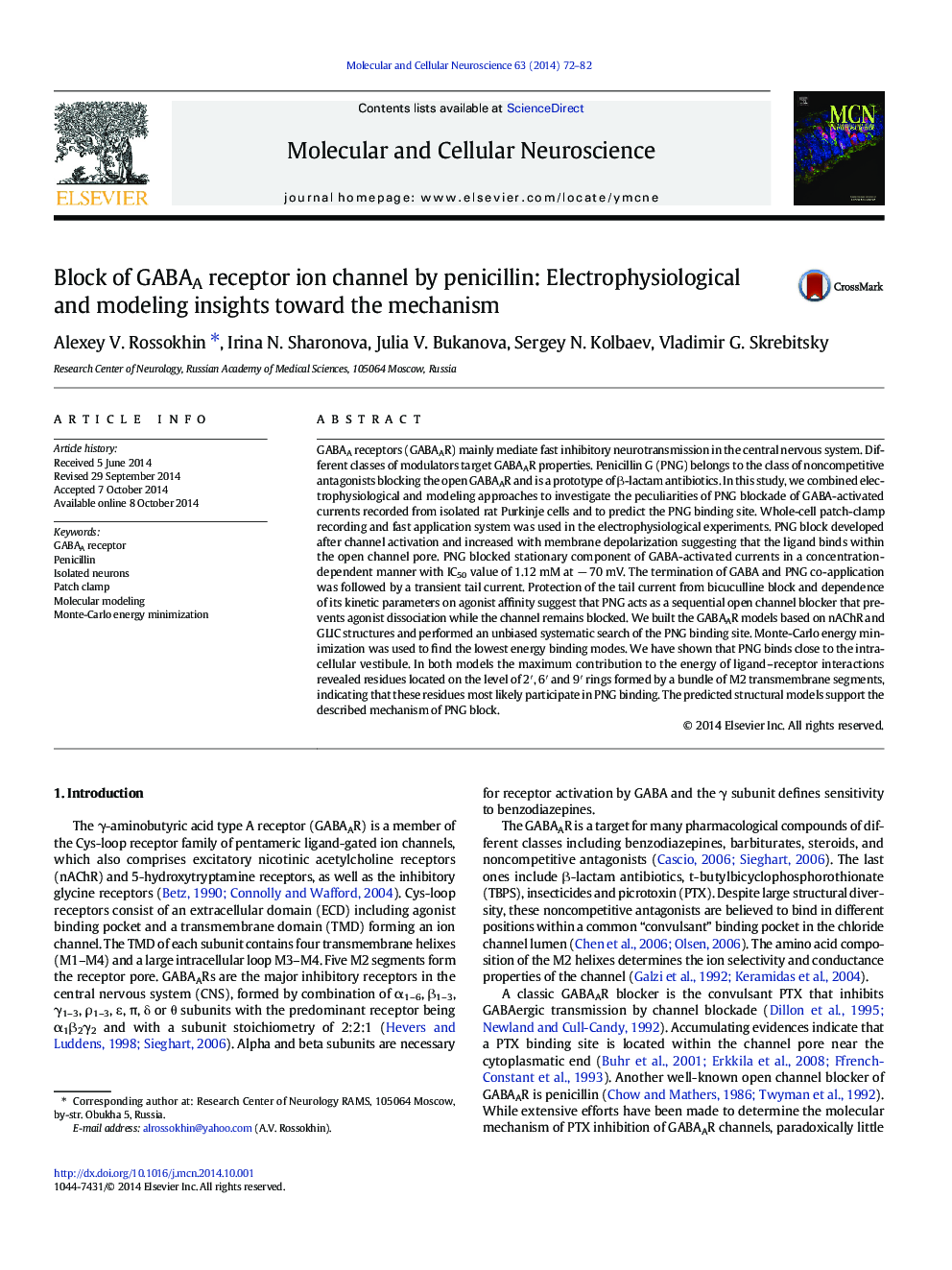| Article ID | Journal | Published Year | Pages | File Type |
|---|---|---|---|---|
| 2198460 | Molecular and Cellular Neuroscience | 2014 | 11 Pages |
•PNG blocks GABAAR as an open channel blocker.•PNG acts as a sequential blocker and prevents agonist dissociation.•PNG block corresponds to a “foot-in-the door” mechanism.•The structural model of PNG binding in the GABAAR pore was built.•Residues at the level of 2′, 6′, 9′ in M2 segments are involved in the PNG binding.
GABAA receptors (GABAAR) mainly mediate fast inhibitory neurotransmission in the central nervous system. Different classes of modulators target GABAAR properties. Penicillin G (PNG) belongs to the class of noncompetitive antagonists blocking the open GABAAR and is a prototype of β-lactam antibiotics. In this study, we combined electrophysiological and modeling approaches to investigate the peculiarities of PNG blockade of GABA-activated currents recorded from isolated rat Purkinje cells and to predict the PNG binding site. Whole-cell patch-сlamp recording and fast application system was used in the electrophysiological experiments. PNG block developed after channel activation and increased with membrane depolarization suggesting that the ligand binds within the open channel pore. PNG blocked stationary component of GABA-activated currents in a concentration-dependent manner with IC50 value of 1.12 mM at − 70 mV. The termination of GABA and PNG co-application was followed by a transient tail current. Protection of the tail current from bicuculline block and dependence of its kinetic parameters on agonist affinity suggest that PNG acts as a sequential open channel blocker that prevents agonist dissociation while the channel remains blocked. We built the GABAAR models based on nAChR and GLIC structures and performed an unbiased systematic search of the PNG binding site. Monte-Carlo energy minimization was used to find the lowest energy binding modes. We have shown that PNG binds close to the intracellular vestibule. In both models the maximum contribution to the energy of ligand–receptor interactions revealed residues located on the level of 2′, 6′ and 9′ rings formed by a bundle of M2 transmembrane segments, indicating that these residues most likely participate in PNG binding. The predicted structural models support the described mechanism of PNG block.
